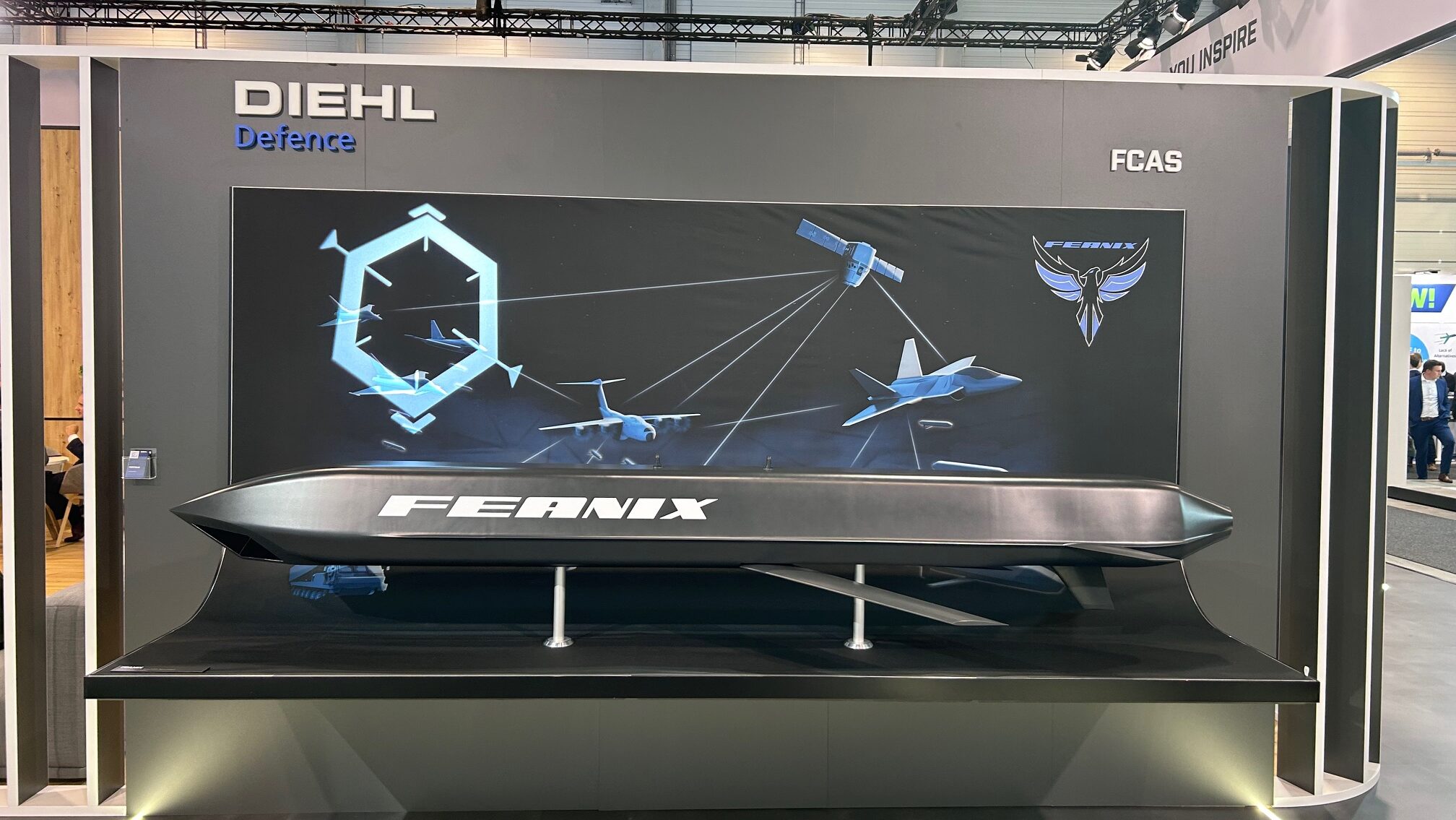
BERLIN AIR SHOW — German weapons-maker Diehl Defence is in talks with the German Armed Forces to develop and fund the manufacturer’s future FEANIX capable but expendable drone, which could see the two sides agree on a deal this year.
“Now we are talking exactly about this topic and I think soon you will get clarification” about an agreement, Alexander Brugger, project lead for FEANIX, told Breaking Defense. “Hopefully [it happens] this year.”
The manufacturer unveiled a concept for the new “light remote carrier” here in Berlin today. FEANIX stands for Future Effector — Adaptable, Networked, Intelligent, Xpendable.
A spokesperson for the German Armed Forces told Breaking Defense they could not confirm nor deny talks with Diehl about FEANIX, but said, “We are in constant communication with the industry about possible relevant developments in the defense sector. As soon as contracts are concluded, we will provide information on our website.”
The FEANIX platform is modular by design, can be integrated with a range of different payloads, from sensors to “lethal and non-lethal” items, noted the manufacturer in a company statement.
Brugger said that a development program is expected to start in the “early 2030s,” and that so far Diehl has self-funded the initial design phase, stressing that consideration is being given to air-, land- and sea-launched capabilities to fit with multi-domain operational requirements.
Ahead of the 2030s time-frame, he explained that the company plans to develop a testbed platform by around 2028, with the prototype built in-house at Diehl’s Uberlingen facility.
“From there we would have two years to get to 2030, and that would be the timeframe to fuse all the knowledge together and start the development of the operational product,” Brugger said.
“We are iterating [the design] year after year and getting closer to the development stage,” he added. “It’s a modular kind of cruise missile.”
The front section of FEANIX, inside the nose, can be equipped with a warhead, a jammer or “other” payloads, according to Brugger, while the body is fitted with an air-breathable engine. Forecasting the main operational priorities for the remote carrier, he noted, Suppression of Enemy Air Defense (SEAD) and Destruction of Enemy Air Defenses (DEAD) are of interest.
If “you take all these capabilities with the different modules, you can then network a group of five or six [remote carriers] and together they can join up to a team, which is greater than the sum of their parts because, jamming, targeting and effectors in a combined data network are much more effective than on a single platform,” said Brugger.
Remote carriers have long been a core part of the German, French and Spanish Future Combat Air System (FCAS) next generation fighter program, and are expected to be developed in various sizes and perform a range of different missions, offering increased combat mass and a way of keeping manned platforms further out of enemy range.
“In the future the manned fighter will be much more expensive and much more complex to build, so to keep bringing combat mass to the battlefield you have to push the capabilities to unmanned platforms,” added Brugger. “You can’t have all the capabilities in one expensive platform.”
More broadly, the manufacturer is part of a FCAS Future Combat Mission System (FCMS) industrial consortium, based around the target of successfully engineering “networked sensor and effector systems in a platform-independent manner and to be able to use them in real joint and combined operations,” according to company literature.
FEANIX though is “not bounded” by FCAS, said Brugger, indicating that Diehl “can go at our own speed” to continue developing the weapon system.